Blenheim apricot grower par excellence, like Cirone, is back at my local farmers’ market with this year’s crop, which means it’s time to pull out the canning equipment. Yes, the minute the brief apricot season begins, I start thinking about its end and how I will extend the season.
The more I learn about jamming and canning, the more I tinker with my Safta Rachel’s preserve recipe. Not gussying it up with add-ins and such, but revising technique, ratios, and canning process to better capture the honeyed, sweet-tart flavors of these apricots.
I’ve reduced the sugar by a lot since my recipe was first published in the LA Times 15 years ago. In those days, I advocated a half pound of sugar to one pound of fruit, and thought that was pretty brazen, considering tradition calls for a one-to-one ratio.
I lowered the sugar some in the version that appears in The Santa Monica Farmers’ Market Cookbook, but now I’m down to 2 pounds of sugar (4 cups) to 6 pounds of fruit (5 pounds pitted), or ¾ cup per pound of fruit, which better allows the apricot flavors to shine. Sugar is the preservative here, so I’m not going to go any lower. Sugar also acts as a thickener; in this case apricots, which are naturally pectin-rich, set up just fine with the lower amount of sugar.
After taking a couple of canning classes with Valerie Gordon and Kevin West, author of the brand-new canning book, Saving the Season, I reduced the macerating and cooking times to speed the process and get a much fresher taste. These brave canners also gave me the confidence to “put up,” not freeze, my summer preserves, a project that feeds my inner craftsy-ness.
Click here if you want to read more about Blenheim apricots, my grandma, my dad, and our apricot tree, but skip that earlier jam recipe and use Version 2.5 below. And get going; only two more weeks of Blenheims left….
Safta Rachel’s Apricot Preserves, Version 2.5
Cut fruit into a mix of halves and quarters to get a nice, thick jam with lovely large pieces of preserved fruit, which you’ll especially appreciate come winter.
6 pounds apricots
4 cups sugar (2 pounds)
1 lemon, optional
Have tasting spoons close at hand.
Cut apricots in halves and quarters and place in a non-reactive bowl. You’ll have 5 pounds of fruit after pitting. Pour sugar over apricots and give a gentle stir. Don’t worry if things aren’t completely blended. Let the mixture stand at least 1 hour. You can do this the night before; if so, cover and refrigerate. Bring to room temperature before cooking.
Scrape the mixture into a wide pot. Cook over medium-high heat, stirring often and skimming foam as needed. After about 15 minutes, the jam mixture should have come to a good boil, the foaming will have subsided, and the juices will be shiny and starting to thicken. Reduce the heat to medium-low as you get close to this point to have more control over your jam.
Dip a spoon in and let the mixture flow off the spoon. If some of the mixture clings to the spoon before slipping back into the pan, the jam is done. I find this point is usually reached after about 5 more minutes of cooking (20 minutes total). Or, test for doneness by spooning a bit of jam onto a plate and putting it into the freezer for a few minutes. Run your finger through the mixture. If it stays parted like the Red Sea, the jam is done. Either way, taste the cooling jam for a good sweet-acid balance and add lemon juice to taste.
Ladle the preserves into prepared ½- or 1-pint jars, leaving ½-inch headspace. (I follow Valerie and Kevin’s method of washing jars in hot soapy water or in the dishwasher and then storing the hot jars on a sheet pan in a 200-degree oven until I’m ready to fill them with hot preserves.)
Here’s a link to the National Center for Home Food Preservation’s instructions on sealing and processing jam. Store preserves in a cool cupboard up to one year.
If you can’t can for one reason or another, allow the preserves to cool uncovered. When cool, cover, and store the preserves in the refrigerator up to 1 month, or freezer for up to 3 months (you can keep them longer than that, but they won’t be as perky).
Makes about 5 pints.[/fusion_builder_column][/fusion_builder_row][/fusion_builder_container]

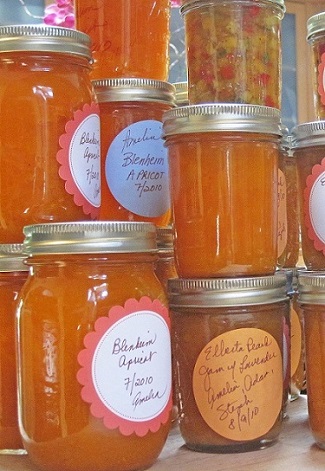

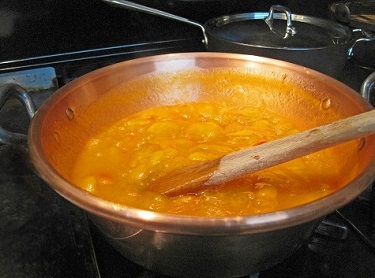
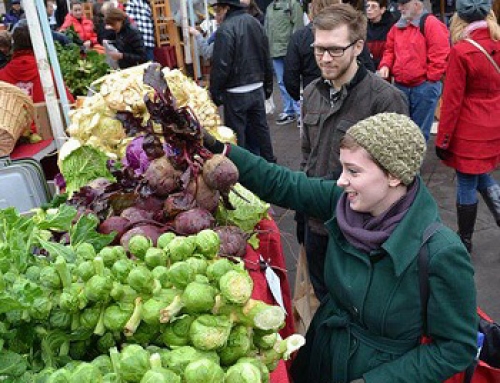
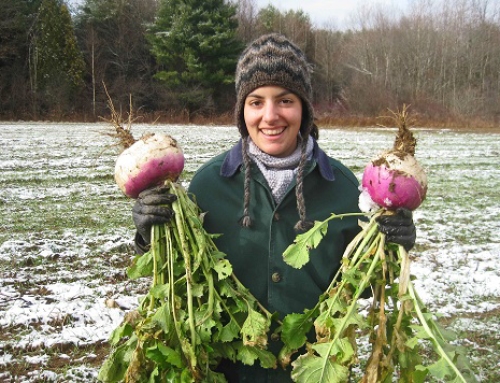
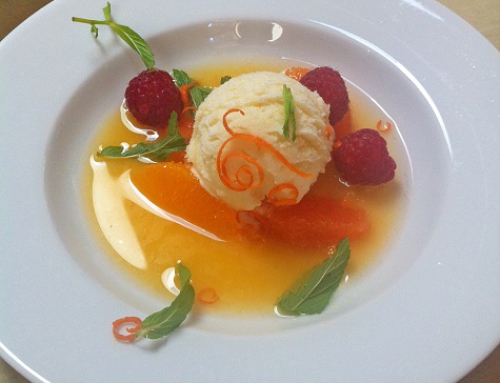

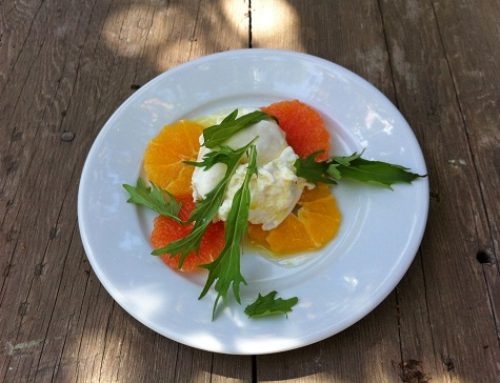
Amazing recipe. We made some pie with it too! We made double so we had enough to spare 🙂
Nice! It’s that time of year again…
Thanks for the tip on when the jam is ready. My new apricot tree (1st yr) gave me 500kg (1lb) for which I was grateful I didn’t know whether to bottle or jam it but turned them to jam (2 + 1/4 jars). I think I left it on the heat a bit long the last 1/4 is quite thick and stiff (toffee like) but it is so nice. I didn’t want an apricot tree as I never liked the fruit when bought in the store and i didn’t like store bought apricot jam, but I’m so glad the husband over ruled me and put one in – i am now an apricot convert. Next year I will find this link again for more jam!
This recipe is delish! My friends and family love it. I used 3 cups of sugar and it was still sweet enough. 🙂 can you make a peaches using same basic methods? Less sugar?
Desiree, I’m so glad! Yes, the same general method will work with peaches. I prefer to peel the peaches, dropping them 2 or 3 at a time into pot of boiling water for about 30 seconds, and then slipping off the skins. Peaches have more juice and less pectin, so you may need the same amount of sugar to help the jam thicken. You can correct acid balance at the end with lemon juice to taste. Or, you can cook down the jam longer, but take care to not let the sugar caramelize.
Amazing recipe! Simple and delicious… didn’t need any lemon juice. Mine took about 25 minutes to finish cooking. I’ll never enjoy store bought apricot jam again!
True that. And such a great way to mark the season!
OMG, there wasn’t enough! We’re down to our last small container. I’m going to try to make another batch using Apriums. Apricot season is so short! Grandma’s recipe rocks.
My kitchen looks like a canning factory during apricot season for just that reason. I process 12 pounds of fruit on each canning day! Please let me know how Aprium preserves turn out!
Where is the processing time for pint jars?
Hi Wanda, I process 1/2-pint and 1-pint jars of preserves in boiling water for 10 minutes. I turn off heat, remove pot lid and let jars stand for 5 minutes before lifting them to a towel-covered cooling rack. (Processing times for canning vegetables are different than for sugar-rich preserves and jams.)
Thanks for asking–I’ll update the blog soon!
Im so excited as my 3 year old tree has enough to make jam. Last year I had 8 apricots.
Im going to do tomorrow, as I picked half today. Worried the critters will get them.
I also have some Santa Rosa plums. Yippee.
That’s wonderful, Beth. Your tree is behaving exactly as Leviticus and all good farmers today would tell you. It takes a good three years to get some fruit. You’ll have a bit more in 4th year, and plenty in the 5th. Keep me posted on your tree!
Hi, Are the peels very thick if left on, as your recipe does? I’m using apricots from my backyard (in Texas). The peels seem pretty nonexistent to me, but just wondering.
Hi Tisha, I agree, apricot peels are not a problem at all. I never peel them to make preserves. Where in TX are you?
Agree, My friend asked me to make some apricot preserves for her. I just cut them in half , removed the pit and threw them in hte pot with sugar and lemon juice. No peeling at all. And OMG; sooooo delicious and easy to make.
Delighted to hear!
I don’t like peels in mine. I use a hand turned food mill. It squishes out the apricot and leaves the peel behind.
Do you peel them? And how many jars will this yeil? Than i can hot water bath for storage?
So they don’t need pwctin to set?
Hi Charlotte, That’s the beauty of apricots–you don’t need to add extra pectin; they have enough of their own to make a thick jam or preserve, and apricots don’t need to be peeled before jamming. As noted in the recipe, yield is 5 pint-size jars–more if you use smaller jars, fewer jars if you use larger ones. Yes, for 1-year pantry storage, seal in water bath. 2020 Apricot jam-making season is almost here!
Estaba buscando esta información, Besos!